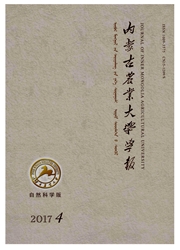

 中文摘要:
中文摘要:
本文采用熏蒸法和土壤酶活性测定法,研究了内蒙古大兴安岭不同火烧迹地土壤微生物生物量碳氮和酶活性的变化特征。结果表明:与对照(未过火的)相比,火烧后不同年份的火烧迹地土壤微生物生物量碳氮、土壤脲酶活性和土壤蔗糖酶活性均极显著下降。除了土壤脲酶活性外,轻重度火烧迹地2003年显著或极显著高于2008年和2012年。随着火烧后恢复年限的增长,土壤微生物生物量碳氮、土壤脲酶活性和土壤蔗糖酶活性均有所提高,经过大约10a的恢复,可达到了未过火对照组水平,相比之下土壤过氧化氢酶活性恢复的较快。该结果揭示了大兴安岭火烧迹地恢复过程中土壤质量状况的动态变化,为森林生态系统的科学管理和森林更新提供了理论依据。
 英文摘要:
英文摘要:
In this paper, using the fumigation and enzymatic activity determination method, the characteristics of soil microbial bio- mass carbon and nitrogen and enzyme activities were studied in different burned area of Great hinggan Mountains of Inner Mongolia. The results showed that: compared with the control group, the soil microbial biomass carbon and nitrogen, soil urease and invertase activities had very significantly dereased in the different burned years. In addition to the soil urease activity, the others light of severe burned of 2003 burned area were significantly or very significantly higher than that in 2008 and 2012. As the restored years went on, the soil microbial biomass carbon and nitrogen, soil urease activity and soil invertase activity had improved, and after about 10 years of recovery, can reached the level of control. However, compared with others, soil catalase activity recovered quickly. The results re- vealed the changes of soil quality status during the recovery process of burned area in Great hinggan Mountains, and which provided a theoretical basis for the scientific management and forest regeneration of forest fire plantation ecosystems.
 同期刊论文项目
同期刊论文项目
 同项目期刊论文
同项目期刊论文
 期刊信息
期刊信息
